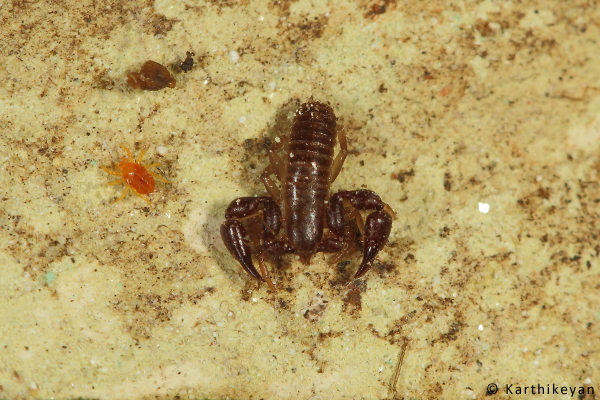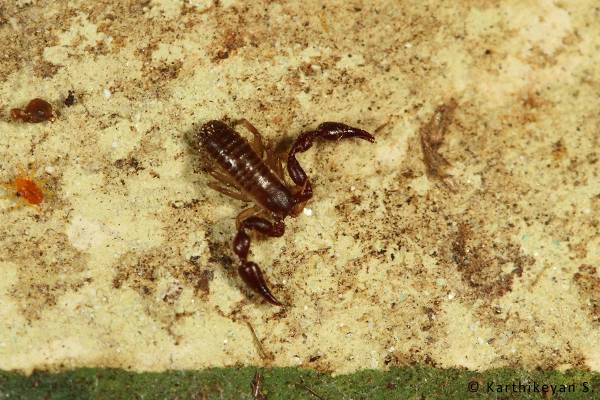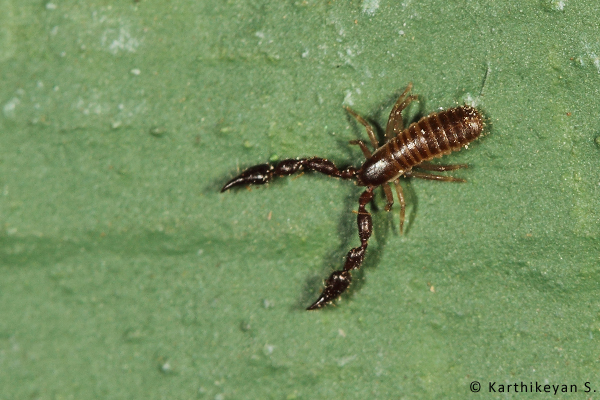It was a surprise encounter. And what an encounter it was – a rush of adrenalin – camera pressed into service – pictures clicked – read ahead to know more!
I was staring at the photo of a little creature whose ancestors roamed the Earth about 380 million years ago while our own ancestors came into existence only some 6 million years ago. My memory says that I have seen this little fellow on an earlier occasion when I was looking under the bark of a tree. But this for sure, is the first time that I managed to train my camera on it.
I was at the Bhimeshwari Nature and Adventure Camp on work. For no reason at all, I peered under a board on one of the walls. There was some spider silk covered in dust, small leaves and tiny twigs. There was also a little jumping spider another somewhat larger spider. And, there was another little creature, measuring not more than a fourth of a centimeter, with all its limbs retracted. I had no clue as to what I was staring at even after I got a few shots.

A False Scorpion with all its limbs retracted.
It was only after the limbs slowly came out and the creature decided to move that it became apparent that it was a False Scorpion or a Pseudoscorpion! The pincers that are so characteristic of scorpions were a certain give away.

Revealing it identity – the pincers visible as the false scorpion started moving.
As I mulled over this encounter, I was wondering as to why we don’t see the false scorpions often. The answer became apparent only when I read up a little about them – their size – most species of pseudoscorpions measure well under 1 cm in length! This little arachnid, like spiders and true scorpions, has eight legs as a scorpion does. But, as can be seen, it has no tail armed with a sting.

The False Scorpion – in full glory.
However, false scorpions do produce venom that is used to immobilize their even tinier prey. The venom gland itself is located in their pedipalps.
I was also taken by surprise to learn that, apart from the usual places that one should expect to see them (under tree bark, rotting logs, amid leaf litter, in the soil, under stones, etc.) they are known to be found in our homes too where they feed on dust mites and other such critters, thereby being deemed beneficial to humans!
They are known to be found in books too – giving them their other name Book Scorpions! They feed on book lice and other such tiny creatures that inhabit books. Strangely enough, though I have a collection of books, I am yet to see a False Scorpion among them.
Looks like I should allow my book collection to gather some dust and revisit them – this time with a mission to see a False Scorpion!